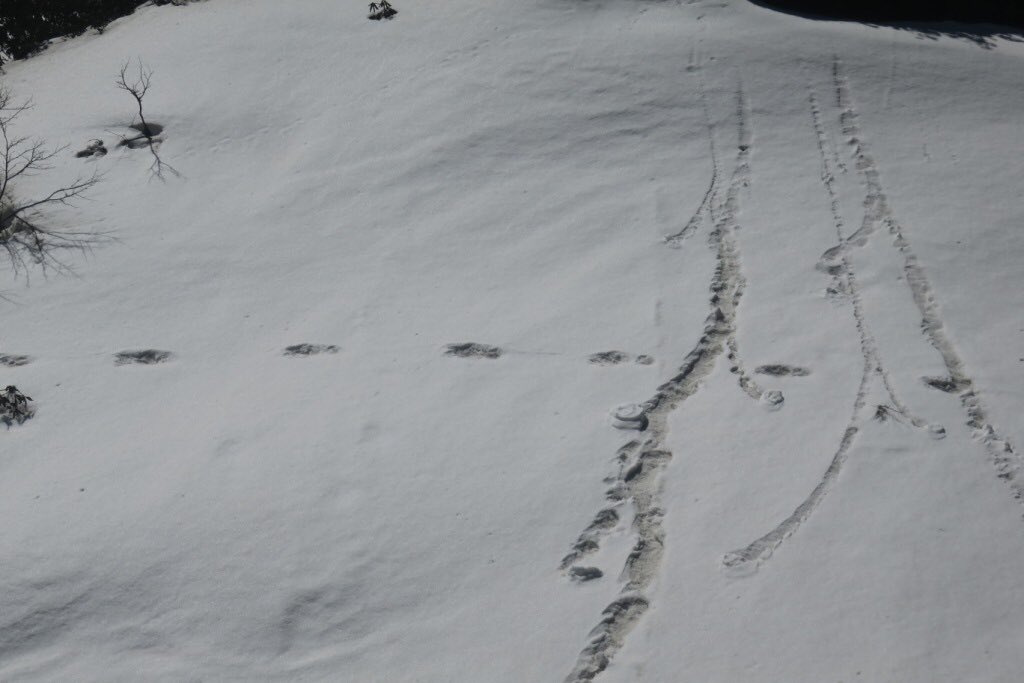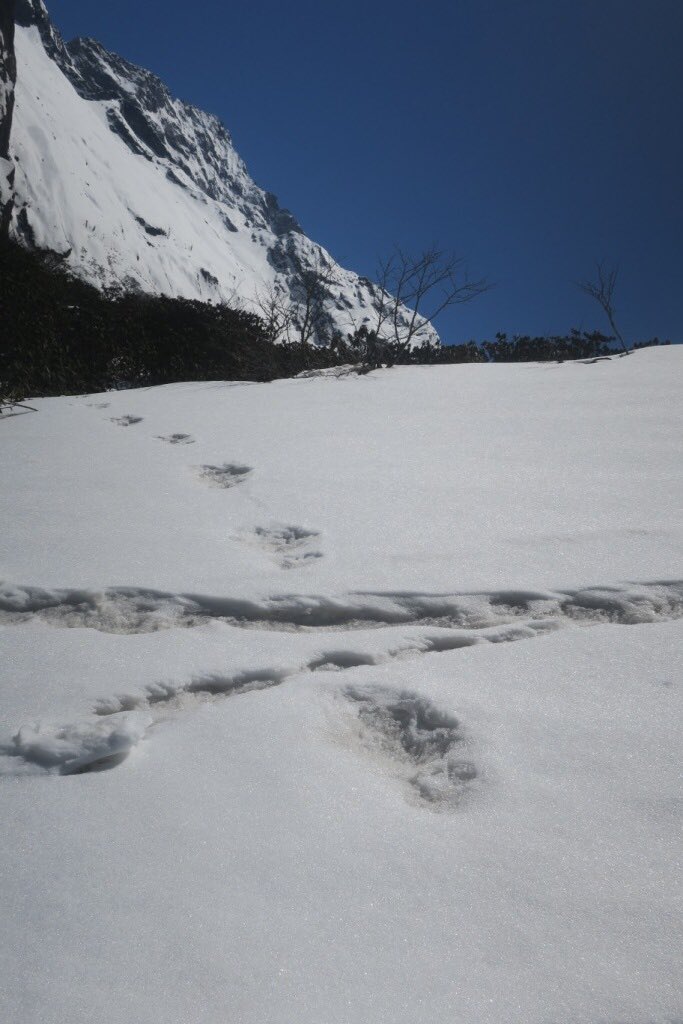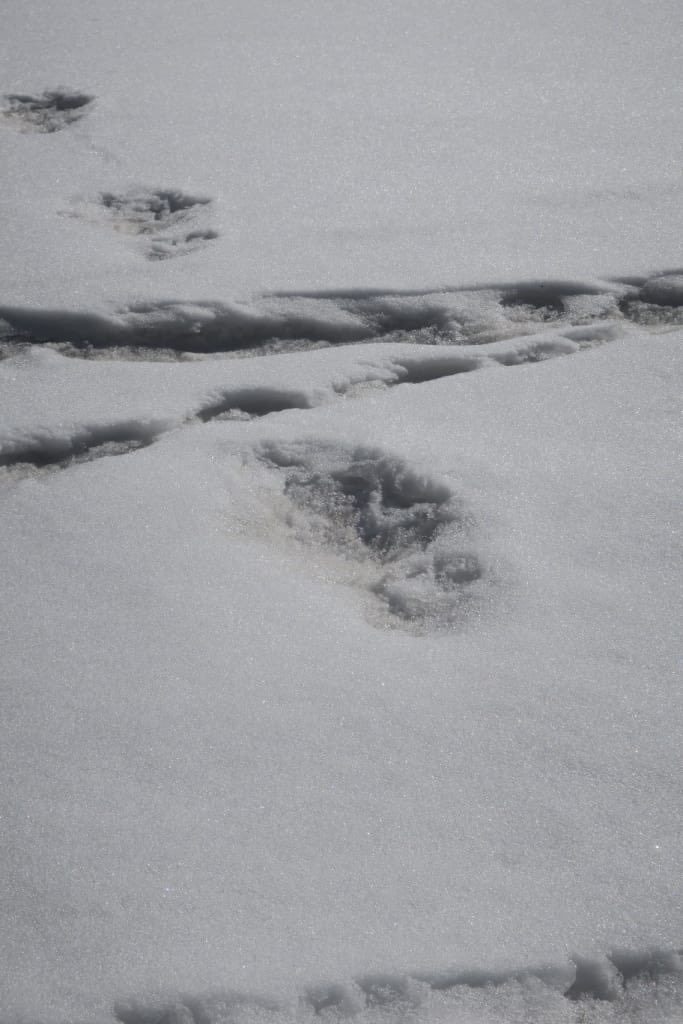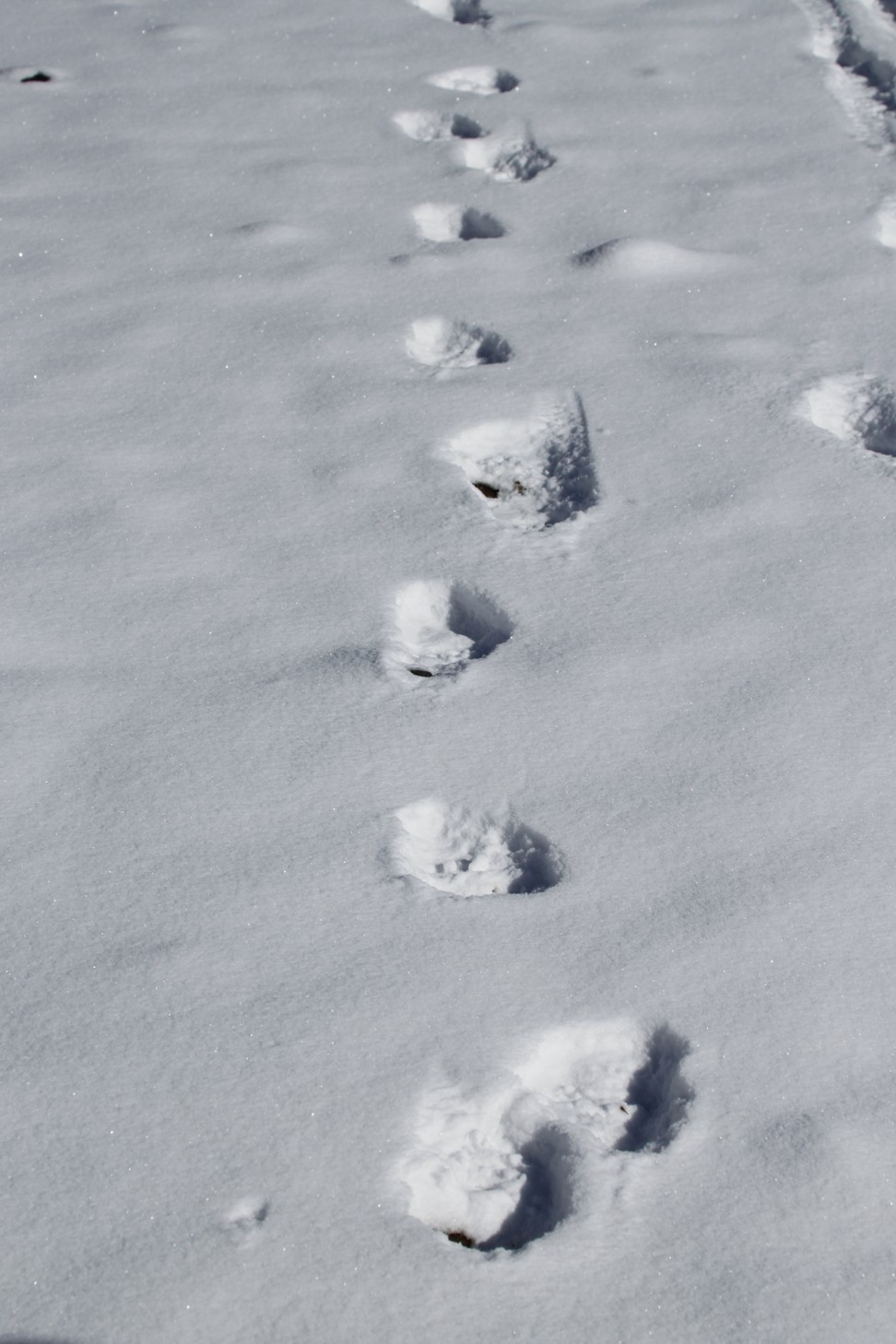2019, April 9: The Indian Army Finds Yeti Prints
On April 29, 2019, the Indian Army Mountaineering Expedition Team posted three pictures in their Twitter account that they claimed showed the footprints of a 'Yeti,' a hairy wildman believed to live in the Himalayas. The post read:
"For the first time, an #IndianArmy Moutaineering Expedition Team has sited Mysterious Footprints of mythical beast 'Yeti' measuring 32x15 inches close to Makalu Base Camp on 09 April 2019. This elusive snowman has only been sighted at Makalu-Barun National Park in the past."
...and included the following pictures.



Mysterious prints. [Larger versions here]
Makalu is located in the Himalyas on the borders of Nepal, Tibet, and China. While Makalu is the fifth highest mountain in the world at 27,838 feet, the Makalu Base Camp mentioned in the post is located around 16,000 feet up the slope.
Given how simple the post was, the reaction was explosive. Tons of comments appeared on the post within the first few hours of its existence, and the story received worldwide news coverage by the following day!
Most of the comments and news coverage, however, were very negative; there was a clear assumption that either the people reporting the matter were joking or looking for attention, or were somehow stupid... all of which seem unfair judgements when considering the people who posted the pictures were part of the Indian National Army, not an unknown or questionable group. The initial responses -- both good and bad -- were clearly motivated by something else: whether or not the responders already believed in the existence of a Yeti or not, separate from what was shown in the photos.
The Prints
Several tracks are shown in the photos, but the one that is clearly focused on -- the one with the largest prints -- is a line of tracks that appear to be single file. This fact was pointed out by antagonists as showing that whatever made the prints, it must have either been hopping along or walking in a careful line, as if on a fashion show's catwalk. While the observation was meant to humorously dismiss the picture, other voices chimed in with statements that not only had such single line prints been seen before in cases attributed to Yeti, but also in cases attributed to Bigfoot, and in some fossil records of known hominid footprints.
It was also suggested the tracks might have been made by snowshoes or snowboards; but both would be very difficult to use to make prints so far apart. If, as reported, the prints are about 32 inches long -- nearly three feet -- and the distance between each print appears to be about 1-1/2 prints in length, then the stride between the prints is around 48 inches long -- four feet! While the object that made the print might have been smaller than 32 inches in length (a foot might have dragged some in a step, and an animal leaping might have a similar extension of the impression), the distance between the prints would be near impossible for a normal person wearing snowshoes to create. It was also noted that snowshoes would not create the deep center impression of the prints.
A more sensible suggestion was that the prints might have been made by the indigenous bears of the region, the Himalayan Brown Bear or the Tibetan Blue Bear. Both bears are rare, but can grow to be seven feet long; it was suggested that the appearance of being a single file line was created by the bears stepping in each spot consecutively with all four paws as they walked, enlarging each spot while not dragging between them. I went looking for an image that showed one of these bears' tracks in snow to see if we could compare, and luckily ran across a shot taken by Mark David Abbott for an article he wrote about tourist trips to India specifically to try and see these elusive bears. Have a look:
Tracks made by a Himalayan brown bear. [Larger version here]
The prints are similar. The prints do appear to be in a near single file line, which shows that this is a feature that a known animal can produce. The prints in the bear picture do not appear to show the individual prints being composites of four paw impressions though; it looks as if about two paw impressions are likely to fall near each other in the bears' stride.
The hind paws of the Himalayan brown bear average between 8 and 14 inches in length, with the front paws being 40% smaller than the hind paws on average. This means that the stride in these shots, if we give about 1-1/2 paws length to 2 paws lengths distance between the prints we see, would be around 21 to 28 inches apart for the largest bear estimated... far shorter than the estimated 48 inches estimated stride for the Indian Army's pictures above. Heck, 28 inches is smaller than the individual prints in the Indian Army photos, which are 32 inches in length!
So that's where the evidence sits for the moment; I'm hoping that the Mountain Expedition Team will release a lot more information sometime in the future, explaining how the tracks were discovered, and what steps they took to investigate.
Anomalies -- the Strange & Unexplained, as well as my other website -- Monsters Here & There -- are supported by patrons, people like you! All new Anomalies articles are now posted for my patrons only, along with exclusive content made just for them. You can become a patron for just $1 a month!
|









